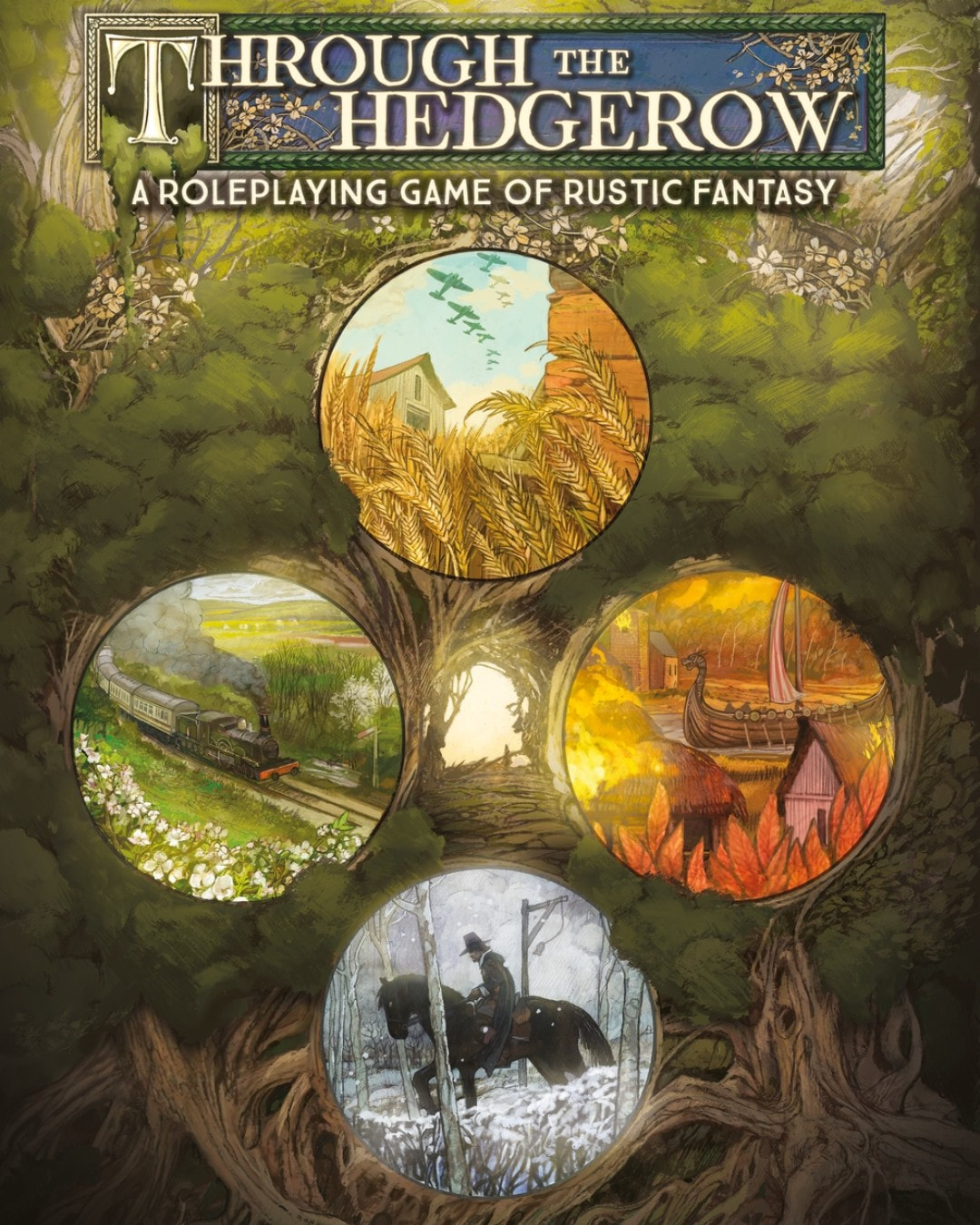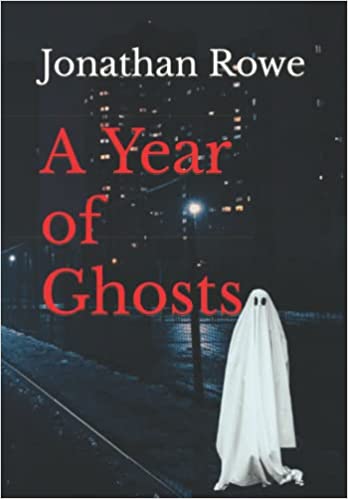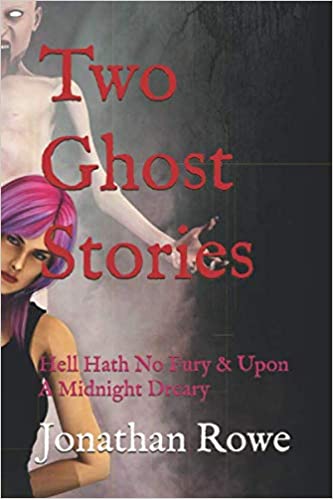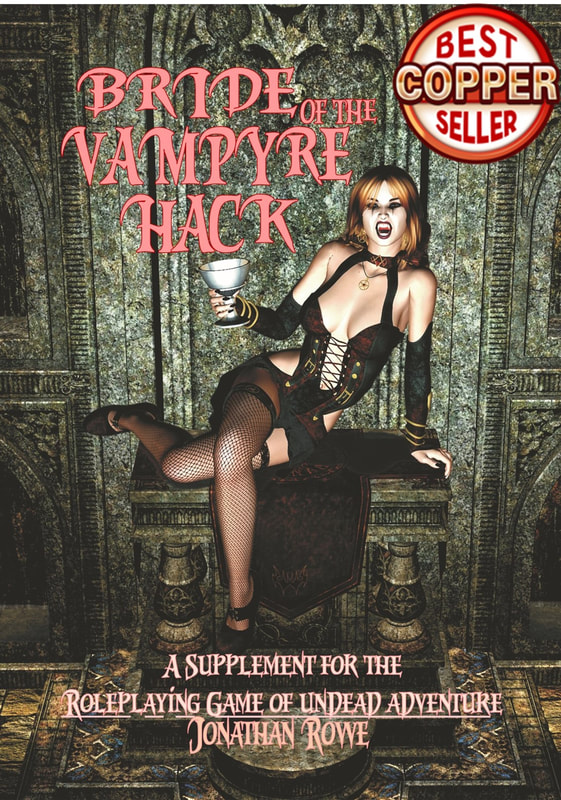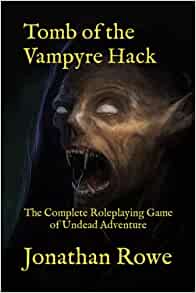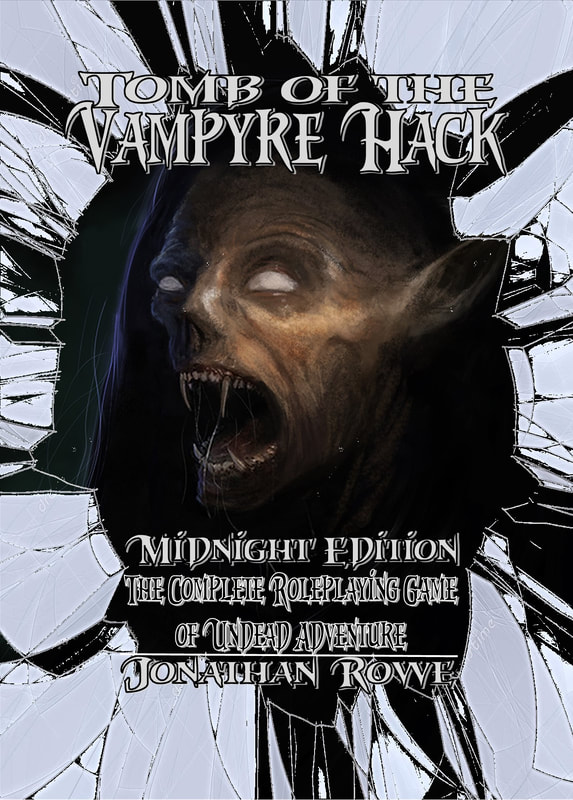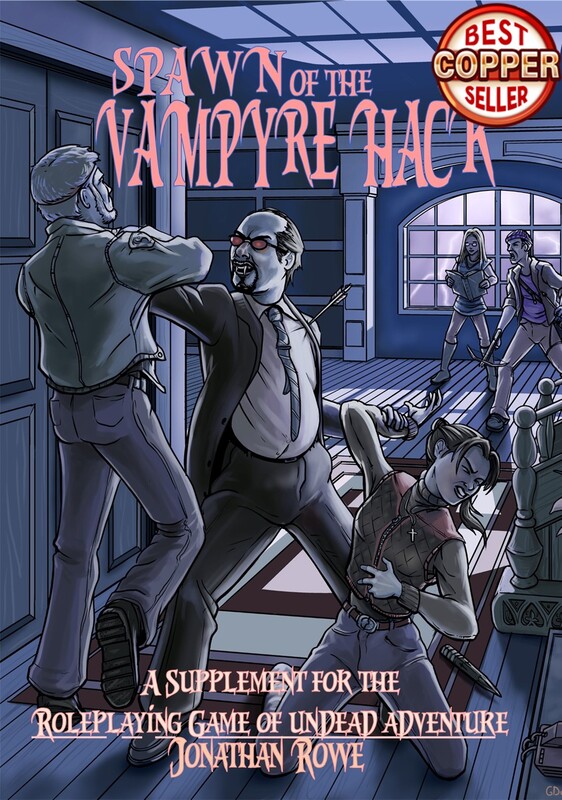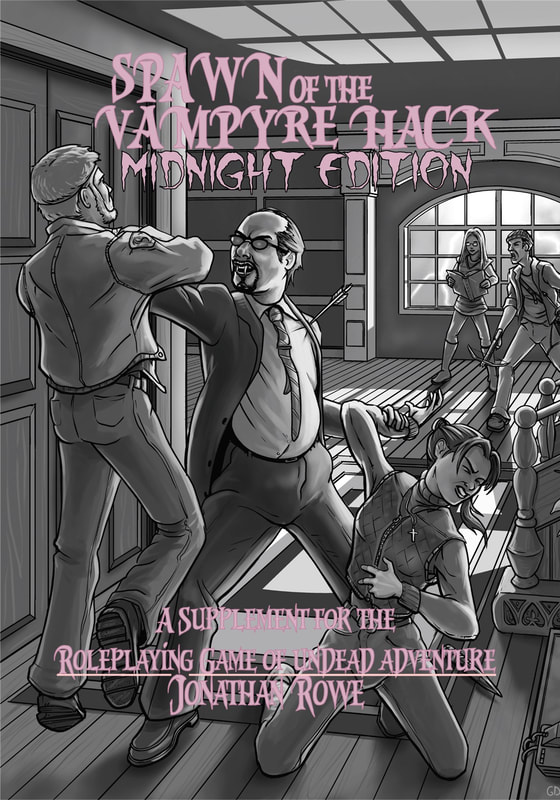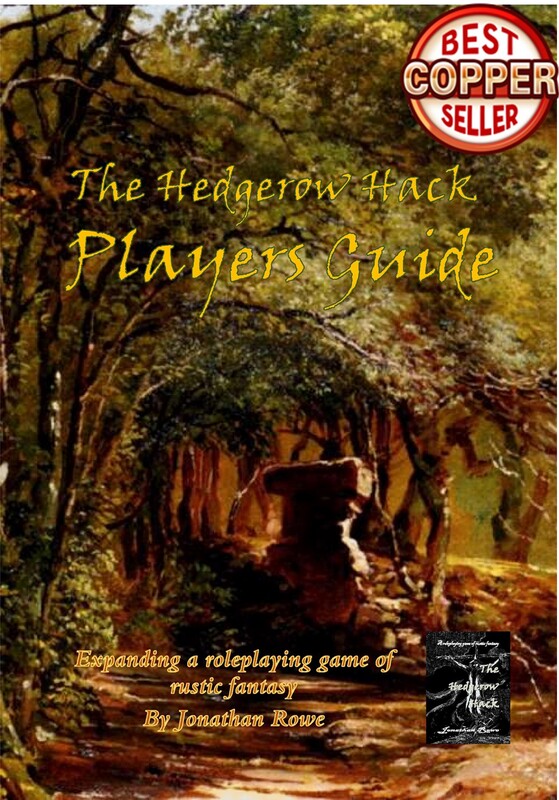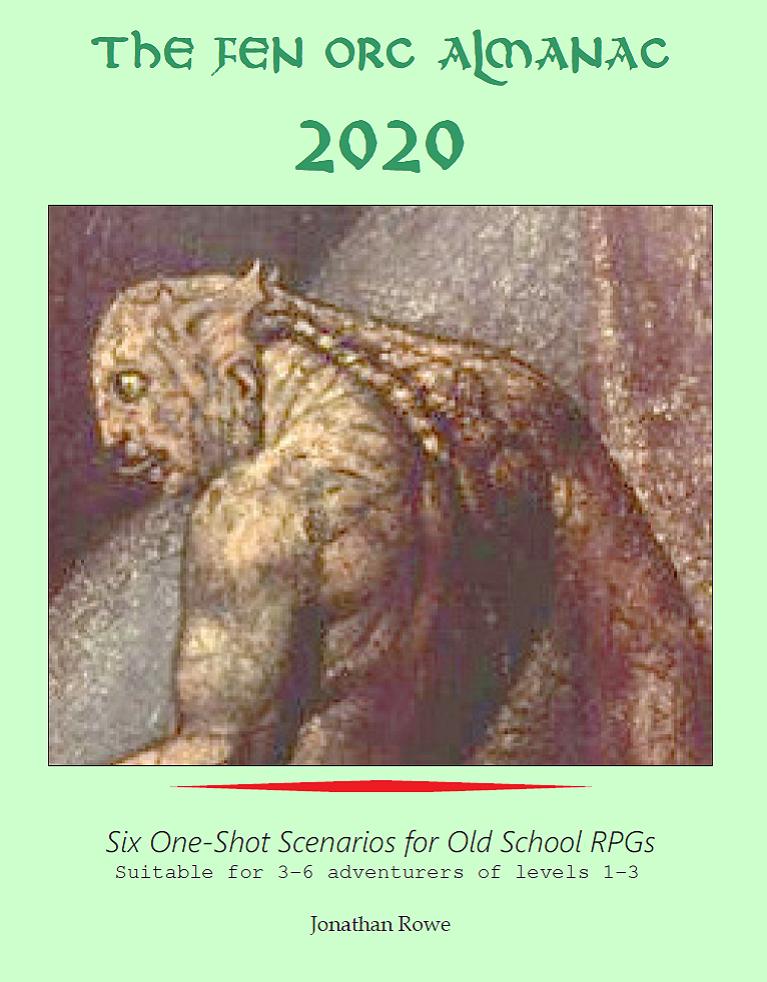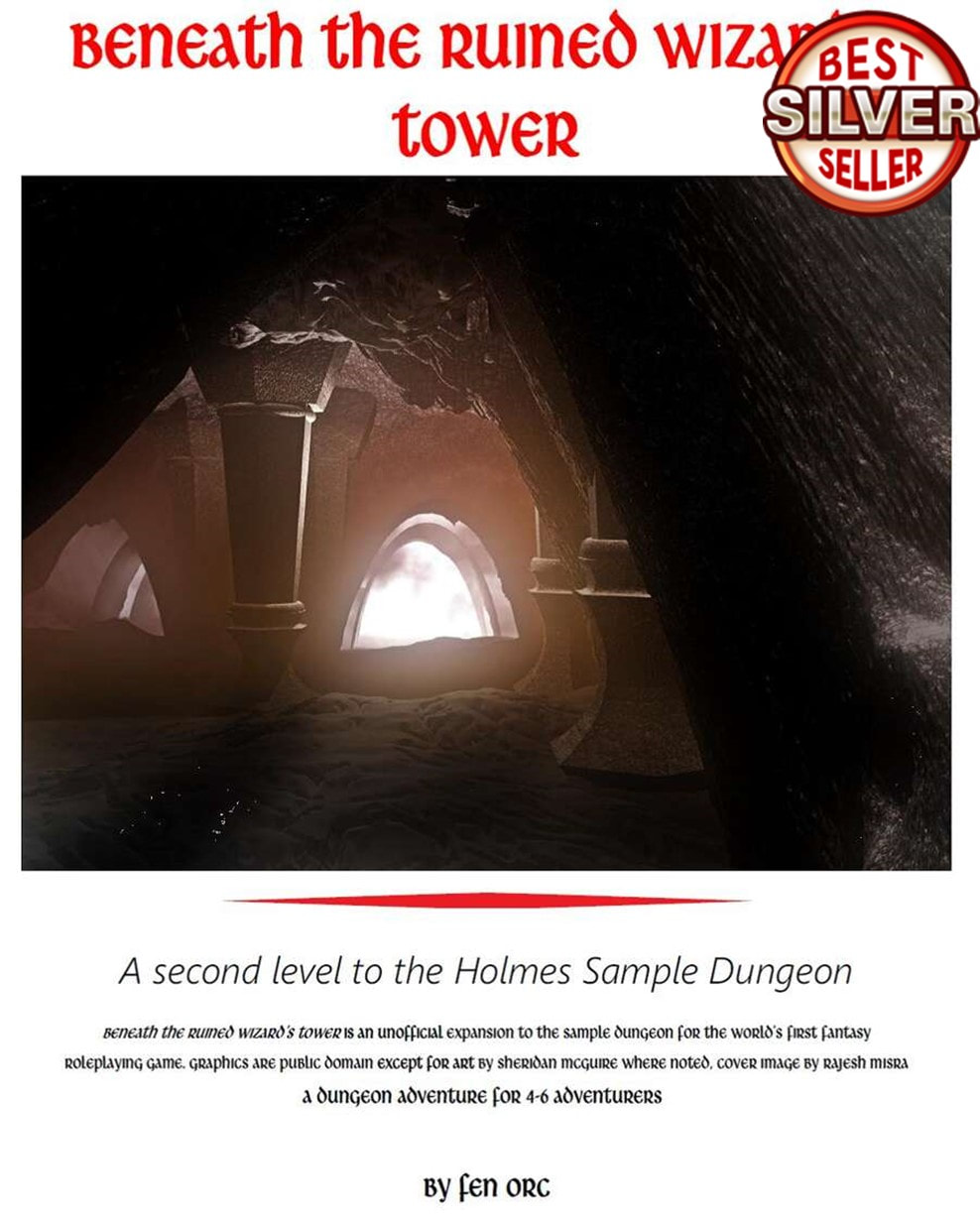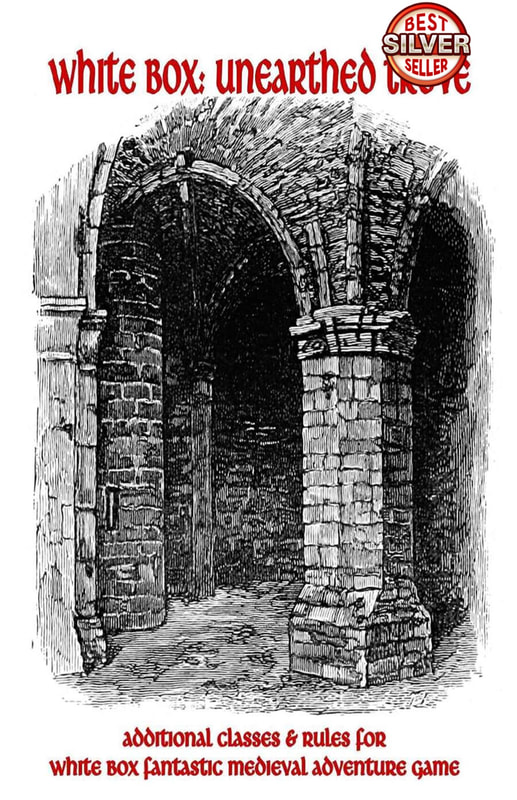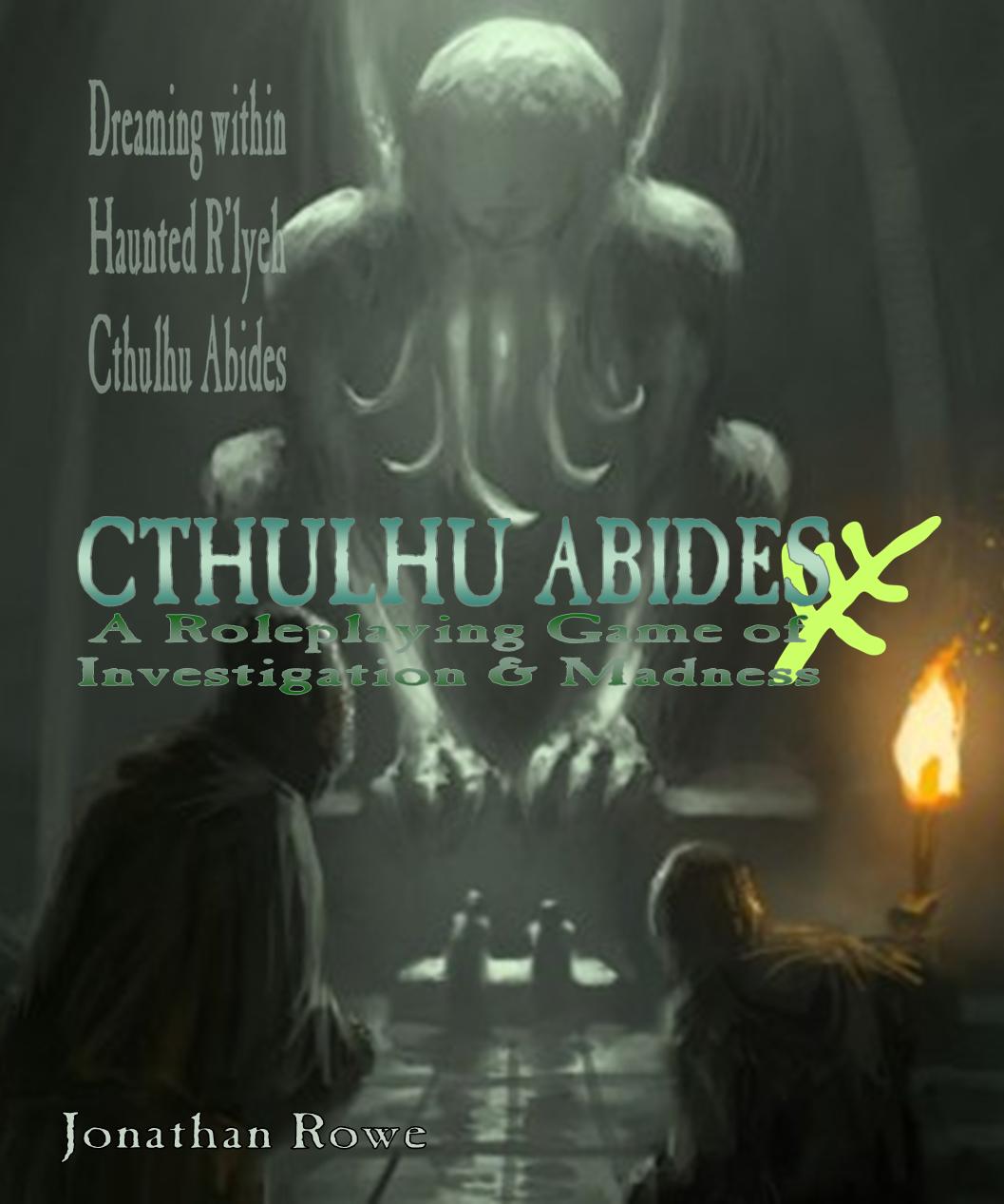|
The Vemora is the first scenario published for Forge Out Of Chaos by Mark Kibbe back in 1998. It retailed back then for $7.98 and consists of a 28-page staple-bound book with colour cover art (by Paul Butler) and some B&W interior art (by Mike Connelly & Don Garvey who worked on the original rulebook), including two maps and lots of drawings of rooms and enemies discovered during the scenario. There's a detailed NPC and two new monsters (mutant animals, nothing special) and a small amount of information about the setting. For me, the product is interesting for what it reveals about the sort of game Mark Kibbe thought he had created; now, two decades later, there are copies for sale that cost less than the original RRP and DrivethruRPG sells a PDF for $6 (without the slipshod reproduction that ruined the PDF rulebook). Background The scenario is set in the realm of Hampton, which is one of those place names that sounds very Olde Worlde if you're American, but not if you're British. Nearly a century ago, High King Higmar ordered the construction of Thornburg Keep and its underground sanctuary to house a precious healing artifact, the Vemora. Then a plague arrived that proved resistant to all medicine and magic and Higmar ordered the evacuation of his stronghold. Since then, monsters have moved in to inhabit the underground levels (as they do!) as well as a couple of groups of marauding humanoids (Higmoni and Ghantu) looking for loot. The Vemora itself remains hidden and inviolate, deep underground. The Hook Rumours of adventure bring the PCs (rootless mercenaries, as per standard) to the village of Dunnerton. Recently, the monster known as a Cavasha attacked the village and blinded its defenders, including the Elder's son. The Elder wants the PCs to hike out to Thornburg Keep and retrieve the Vemora, to use its magic to heal his son. If good deeds aren't a motivation in and of themselves, he'll pay 300gp. A scout will take the PCs to the dungeon entrance and a local Elven healer will accompany the party out of sheer goodwill. The cover of the book (by artist Paul Butler) depicts the very Lovecraftian Cavasha attacking the village. It's an exciting scene, with villagers falling blinded after it uses its gaze power. Unfortunately, the Cavasha itself never features in the scenario, so this picture is a tease, really, since the Cavasha definitely lives up to what the rulebook calls its "gruesome appearance" (p165). The buildings in the village and the style of dress (breeches, lace collars, jerkins) suggest a 17th century setting, rather like Europe during the Witch Trials and the Wars of Religion (or perhaps Warhammer Fantasy Roleplay). I wonder, is this really how Mark Kibbe envisaged Juravia? It's certainly very different from the Post-Holocaust/Dark Ages vibe I detected in the rulebook. Dunnerton Dunnerton is sketched out in essential detail only. There's a Dwarven smith, Brundle Jove, who will offer free armour and weapon repairs to PCs working for the Elder; however he has a finite number of repair kits so there is a limit on the number of APs he can restore. A Sprite trader named Dya Brae runs the store and a list of the resources she has for sale is provided along with the exact amount of each (e.g. she has 5 Healing Roots in total). Alongside her wares, she dispenses some in-character dialogue that mixes inane wittering with nuggets of good sense. The Drunken Dragon Inn offers lodgings and a brief rumour table: the untrue rumours are far more interesting than the actual dungeon itself, which begs the question why the author didn't make use of these ideas! There's a temple of Shalmar, Goddess of Healing and the priest, an Elf named Jacca Brone will accompany the party if they need a healer. His character sheet is provided in full along with some pointers for the GM to roleplay him. There are no subplots going on in Dunnerton, which is always a shame, but the scenario is explicitly pitched at first-time-roleplayers so perhaps that extra layer of complexity is unnecessary. I like the recognition that local smiths and traders don't have unlimited supplies to service adventurers. Providing Jacca Brone is a nice touch, especially if newbie players neglected to take the Binding Skill or avail themselves of a Berethenu Knight. The presence of a Temple of Shalmar left me scratching my head. The gentle Shalmar was murdered by her brother Necros during the God-Wars. Indeed, this blasphemous crime seems to have triggered the wrathful return of Enigwa and the Banishing of the gods from Juravia. What can go on in a Temple to Shalmar? How (and why) do you worship a defunct goddess who can neither respond to prayers nor acknowledge worship? Maybe Shalmar-worshippers are a bit like certain Church of England Vicars: they don't really think their deity exists, but they respect the sort of things she stands for. That's nice, but why a tiny community beset by monsters would support a temple to the beautiful concept of healing, rather than building a temple for and funding the services of, say, a real live Grom Warrior who can kick monster butt, is a pressing question in my mind. The Dungeon, Level 1 The back cover art shows the scout directing a band of adventurers towards the dungeon entrance, which is a broken door set in the hillside, surrounded by carved pillars and steps and all overgrown with ivy and moss. The party includes a big barbarian warrior with a hilarious bald-patch, what look like a dwarf and an archer and a Merikii with his signature two-sword pose. Dungeon level 1 has 32 rooms, very much in the densely-packed Gygax-style rather than the sprawling Holmsian aesthetic. If the PCs press on in a straight line they will pass through the two entrance halls, the Dining Hall and the Great Hall, ending up in the Library where they have to tangle with a Tenant, which is a Mimic-like creature that inhabits wooden objects with a very nasty attack. Along the way, they will come across lots of mosses to test their Plant ID skills on, magical fireplaces which add a much-needed spine-tingling moment to proceedings, possibly find a magic dagger and end up securing some valuable tomes and clues about the nature and location of the Vemora. They will also have a modest skirmish with crab monsters and possibly fall through one of those pit traps that deposits them in the abandoned cell block in Dungeon Level Two, with all the fun that this implies. The trap only triggers if the party numbers 3+, which is an elegant touch: small parties (or cautious ones) are spared this complication. Rooms 1, 2, 4, 5 and (mind the pit trap) 30 take you to the Great Library (#32) and a nasty monster If the PCs venture away from this central spine, things get a bit more varied. Up to the north there are acid-spitting crabs, a teleportation gateway that takes explorers directly to the Royal Chambers on Level Two (but allows them to return, unlike the pit trap), giant rats, giant centipedes, minor trinkets and a guard room explicitly intended to be a safe base for adventurers to make camp. Those who have played D&D Module S1 (Tomb of Horrors) will be wary of this North definitely equals 'safe' and the teleporter offers the intriguing possibility that hapless PCs could blunder straight into the Vemora's hiding place - but of course they won't have the special keys needed to get at it yet. This offers a cute glimpse of where the PCs need to end up and a way of getting there quickly once they've assembled all their keys and clues. The southern rooms are a bit livelier. There are armouries to ransack, more rats, crabs and blood-draining bats to fight as well as a Creeper, which is an acidic slime. There are mysterious tracks to decipher (cue: Tracking and Track ID skills) that reveal you are not alone: Shirek, a tough Ghantu, and his Higmoni henchmen are camped down here. Shirek is the main 'Boss' on this dungeon level and there will be a communication barrier unless someone speaks Ghantu or Higmoni, in which case a fight can be avoided. The set-up here is exemplary: first the signs of ransacked rooms, then the tracks, then the Higmoni, then the appearance of their one-eyed boss. The designer makes some questionable assumptions. The main rulebook introduces a Languages skill but doesn't encourage anyone to learn it, saying "all character races ... speak a common language known as Juravian" (p23) but at the same time each character "is fluent in its own language ... as well as the Juravian language" (p5). The chances that a group of PCs will not include at least one bestial Higmoni or giant one-eyed gorilla Ghantu are (knowing the aesthetic choices of dungeon-bashing players) slim. This means players are highly likely to defuse this encounter non-violently unless they are immensely dunder-headed. But this is supposed to be a teaching dungeon, so that's probably how it should be. The Dungeon, Level 2 The lower dungeon level has 27 rooms, arranged in a sort of loop, with a spur off to the north (the old cell block where the pit trap deposits you) and the south-east (the Royal Chambers where the teleporter takes you). There are several ways down here. The pit trap is the worst: you're in the old cell block, with giant spiders nearby, and you don't know the way out. The teleporter is better: you discover the Royal Chambers and all their loot (including magic items and a magical sword) but you probably cannot open the difficult locks. You can stumble into the eerie throne room but you probably won't have the keys to get into the Vemora's vault. Try exploring further and you encounter the ravenous undead in room #36 (see below). Conventionally, you'll descend the stairs in the southern part of the first level. This brings you into a central columned hall with a fountain, magical roots to identify and the corpse of another Higmoni, tipping you off there are more raiders down here. Have fun exploring the temple rooms, dealing with killer mold and a Berethenu Shrine, which is a great asset for Berethenu Knights and offers a cute benefit for Grom-ites who choose to desecrate it. You soon discover the bedrooms, workrooms, smithies and studies of the castles old occupants and some of their correspondences. This is clearly inspired by the chambers of Zelligar and Rogahn in Mike Carr's seminal D&D Module B1: In Search of the Unknown (1979). There's a pleasant frisson to exploring the intimate chambers of these long-dead people and it's a valuable reminder that this labyrinth was not always a malevolent dungeon. There are a lot more Higmoni down here, split into two groups and leaving evidence of their looting all over the place. They're having a spot of bother with a pack of undead Magouls (why MAgouls? why not just ghouls? why???), so, once again, players who prefer to talk than fight might be able to negotiate something. The Magouls (that name, grr-rrr) are in room #36, which isn't keyed on the map, but it's the room outside the Throne Room #56 (perhaps another reason for smart players to double back and use the teleporter upstairs). Unkeyed room is #36, just off the main corridor (#33) and the only way through to the Throne Room (#56) Once the PCs have their three keys, they can head to the Throne Room (which may or may not involve confronting the undead) and retrieve the Vemora - naturally, its a big golden chalice. Then it's back to Dunnerton for the reward. Evaluation: non-Forge As noted, this is an exemplary tutorial dungeon for a novice group of D&D players. It has all the best features of Basic D&D Module B1, while being tighter and more focused. It's an underground fortress with a lot of empty rooms containing interesting objects and a few mystical moments when the magical fires light up; there are dungeon raiders who pose a challenge but can be negotiated with if the players aren't too trigger-happy; there's a pit trap to the lower level; there's a historical mystery in working out what the rooms once were and who inhabited them. In some ways, it does its job better than Module B1: the quest for the Vemora, and the collection of keys to unlock it, gives structure and purpose to the adventure, rather than aimless wandering. The nearby village of Dunnerton offers support and healing as well as a grand reward. D&D conversions are easy: giant centipedes, rats and spiders (albeit large spiders in D&D terminology) are standard; use stirges for Ebryns and fire beetles for Nemrises; 1HD piercers work for Bloodrils; the Creeper is an ochre jelly; the Tenant is hard to translate but a half-strength mimic would work (3 HD, 2d4 damage). The Higmoni can become goblins, their Leader a hobgoblin, Shirek the Ghantu translates as a bugbear or a gnoll. The Magouls are, of course, proper ghouls with proper names. The limitation of the scenario is that this is all it is. Exemplary tutorial dungeons are all very well, but D&D 5e includes The Lost Mine of Phandelver in the Starter Set, which is a far more ambitious introductory adventure than this. Even back in 1998, the sort of dungeon adventure The Vemora provides was pretty dated: it might perfect the formula of In Search of the Unknown, but that means perfecting something already 20 years old at the time. Nonetheless, if you play any sort of OSR RPG or any iteration of D&D and come across a cheap copy of The Vemora, don't disdain it. It's a little gem of an introductory dungeon that provides the right balance of mystery solving, exploration, combat and a sense of wonder. There's a bunch of noob adventurers out there who will remember it fondly if they get a chance to cut their teeth on it. Evaluation: Forge & adapting the scenario Although it's a great tutorial dungeon, The Vemora is a frustrating product for Forge Out of Chaos. Even in 1998, it was unlikely players were coming to a RPG like Forge as complete noobs. The rulebook makes few concessions to novices, since it commences with a treatise on the Kibbe Brothers' distinctive mythology rather than explaining what roleplaying is. It's very worthy that the scenario carefully points out every opportunity PCs have to use and check skills like Plant ID, Tracking and Jeweler but these sort of training wheels are certainly redundant. Instead, Forge players will be hoping the scenario sheds light on what's distinctive about Forge as a RPG: its themes, setting and conflicts. Yet here we are disappointed. The Temple of Shalmar and its priest Jacca Brone only goes to show that the authors have not grasped (or simply forgotten) the implications of their god-free setting. Forge promises a post-apocalyptic world, but the scenario presents a rather orderly one, with its well-run kingdom and 'High King'. The dungeon is not the mansion of a fallen god but something much more prosaic: an underground fortress that's only 80 years old. The ancient plague hints at darker designs, but is never explained and finds no expression in the dungeon itself: where did it come from? where did it go? why was it immune even to the Vemora's healing power? Then there's the hideous Cavasha from the front cover. With 25+1d6 HP and Armour Rating 4, it's a tough opponent but not beyond the means of a party of adventurers who have availed themselves of magical weapons. With Attack Value 3 and two claw attacks for 2d4, it's a Boss-level combatant for starting PCs and of course there's the permanent blindness from its gaze - though the Vemora's on hand to cure that. Surely the Cavasha, rather than those preposterously-monickered Magouls, should have its lair in room #33.
POST SCRIPT: This file offers a complete conversion to O/Holmes/BX/AD&D:
Developing the Dungeon The Rumour Table at the Drunken Dragon Inn suggests some other, far more interesting, plots within the dungeon. For example, there's the obligatory previous-party-of-adventurers who entered the Keep and never came back. Wouldn't it be better if some of them were still down there, wounded, starving and desperate? There's a rumour about the water being infected with the Plague: that's a good idea! The High King's ghost is supposed to haunt the Throne Room: Forge doesn't do spirits and incorporeal undead, but what if the Plague raised its victims as zombies? What if those previous adventurers are infected by the Plague now? What if there's a cure for it somewhere in the dungeon? What if the cure requires the ichor from a Cavasha's eyeballs? A dungeon like this needs a Dungeon Constable or Dingleman and it makes sense to cast Jacca Brone in this role (which makes more sense than a priest of Shalmar). The Referee has a choice: are the PCs chartered to enter the Keep by the current King, in which case Jacca is an ally who will show them in and offer directions to the Great Hall and warn about Higmoni incursions. Or (more likely) Jacca enforces the quarantine on the site and the villagers of Dunnerton are going behind their lord's back by recruiting adventurers to trespass on the site and retrieve the Vemora. In this case, Jacca is an adversary and wandering monster (on the 1st level) who must be avoided at all cost. If you add the Cavasha to the dungeon, then the Dingleman will know that it lairs somewhere on the 2nd level; he probably warned Dunnerton of its approach when it went marauding out last month. If the PCs have a (self-appointed) mission to destroy it, the Dingleman might allow even unchartered adventurers entry and guide them to the stairs - but will expect them to hand over treasure and magic items when they leave (including the Vemora - it's a royal heirloom). That creates a dilemma since the PCs swore to bring the Vemora to Dunnerton... See how much fun Dinglemen add to a dungeon? Mark Kibbe's decision to frame the scenario as a tutorial dungeon was a mistake, creatively and (I suspect) commercially. But if the dungeon architecture is robust - and this is - then it's easy to adapt it to a more complex story. Removing a few of those acid-spitting crabs, mutant rats and blood-draining bats is step one; replacing them with tragic plague victims and plague zombies is step two. Then there needs to be a cure among the papers in the Great Library (#32) with ingredients to be gathered from various mosses, roots and monster body parts around the site, the whole thing to be brewed up in the Vemora chalice to save the NPCs (and, by that point, PCs too) who are infected. That would be a scenario even experienced players would get behind and, even if it doesn't do justice to Forge's setting, it would pass a merry couple of evenings.
0 Comments
Leave a Reply. |
30 Minute Dungeons
Essays on Forge
FORGE Reviews
OSR REVIEWS
White Box
THROUGH THE Hedgerow
Fen Orc
I'm a teacher and a writer and I love board games and RPGs. I got into D&D back in the '70s with Eric Holmes' 'Blue Book' set and I've started writing my own OSR-inspired games - as well as fantasy and supernatural fiction.. Archives
July 2024
Categories
All
|
||||||||

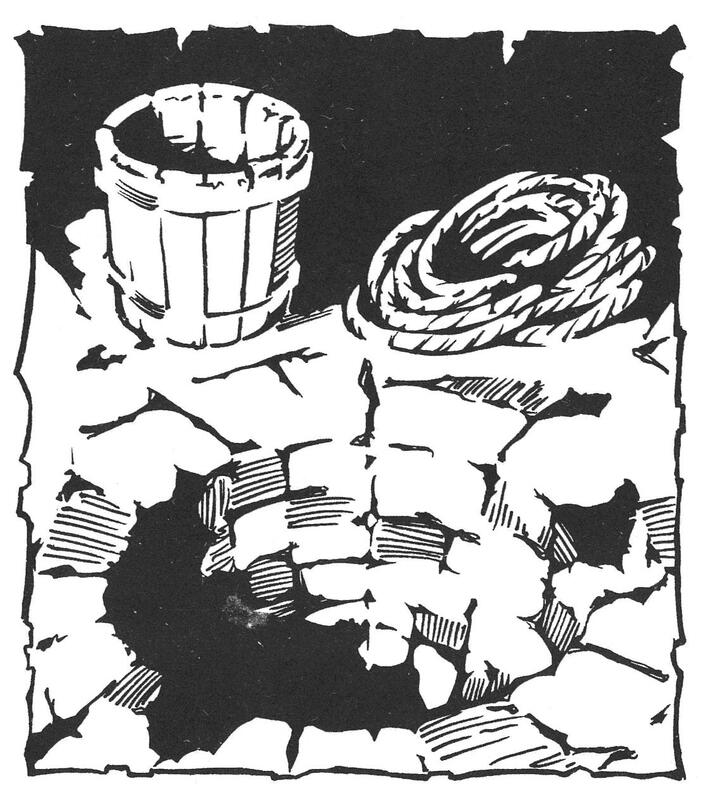
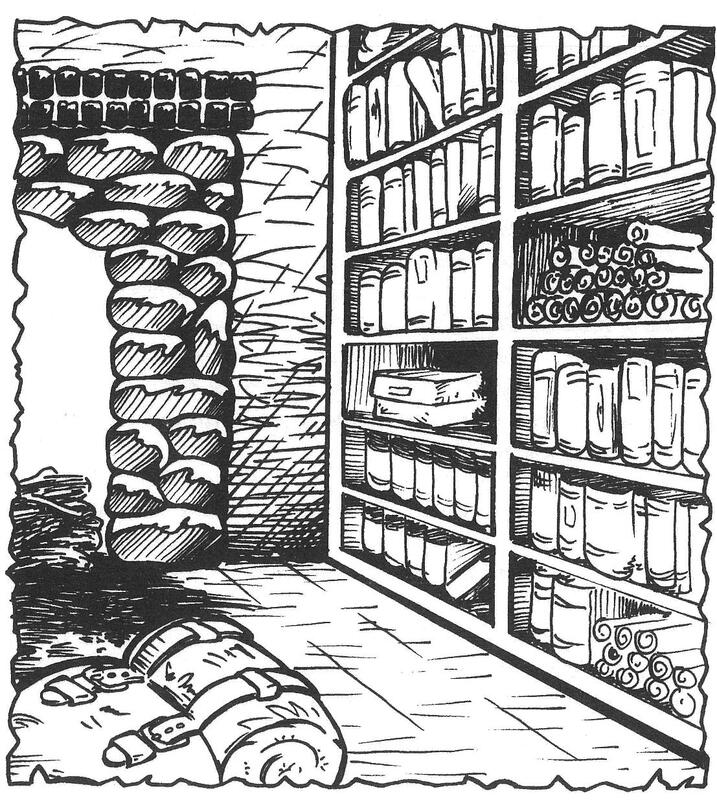
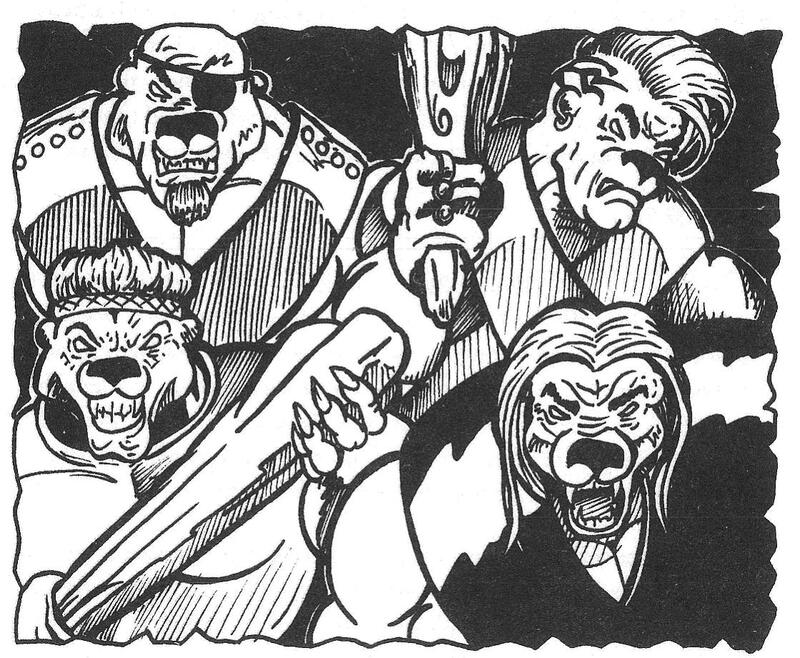
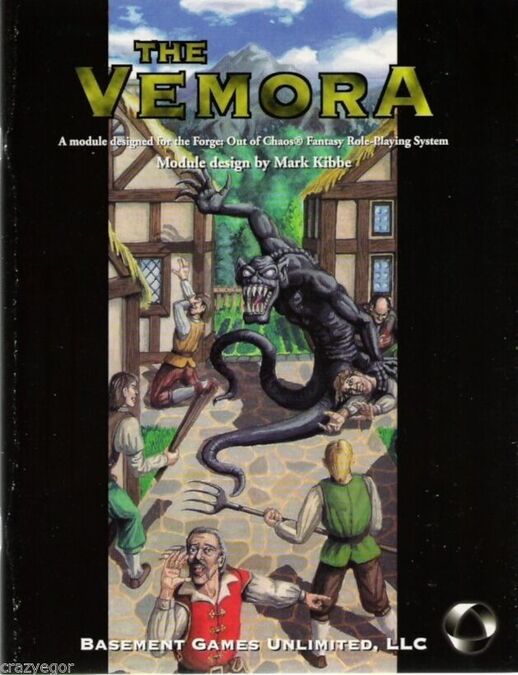
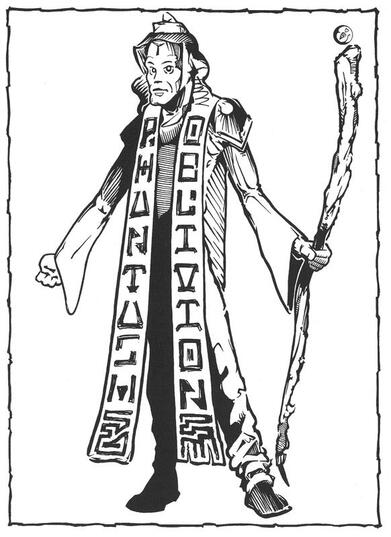
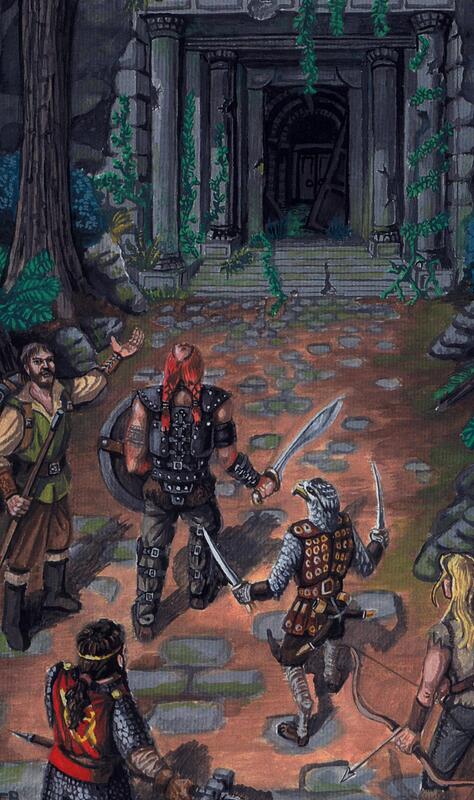
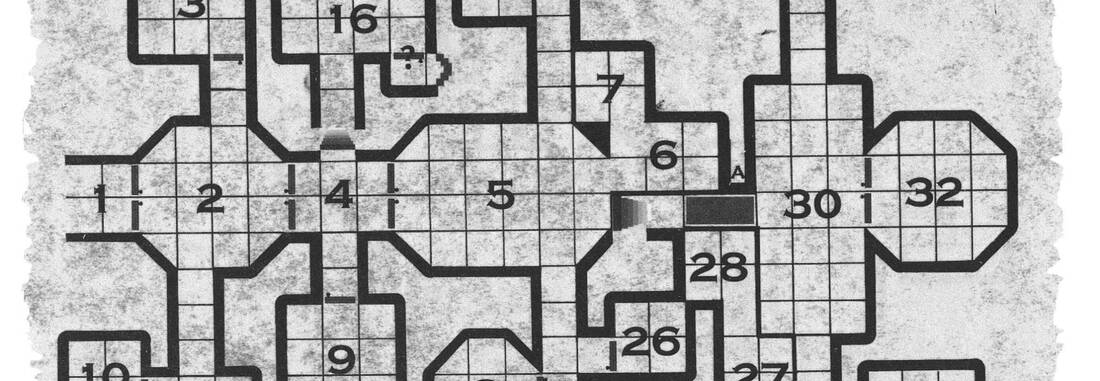
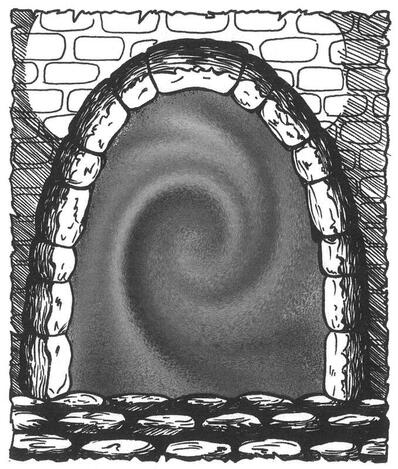
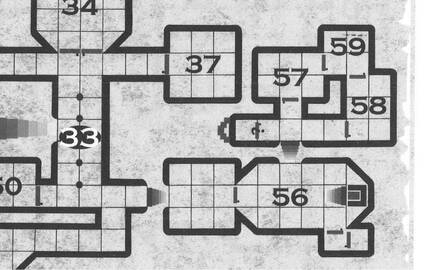

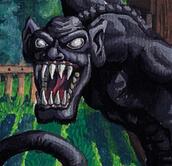

 RSS Feed
RSS Feed
